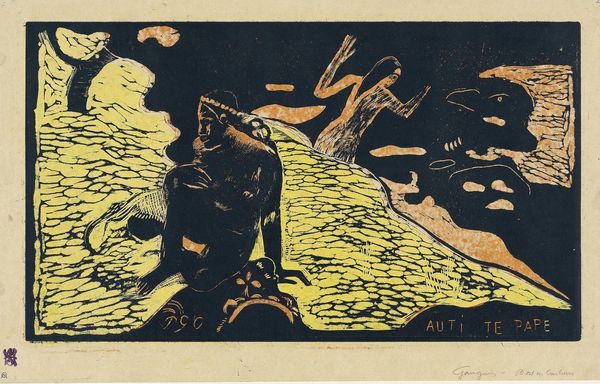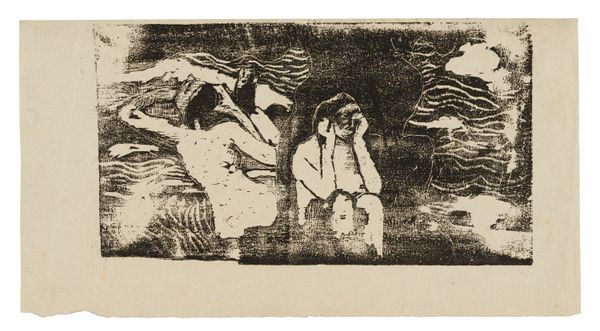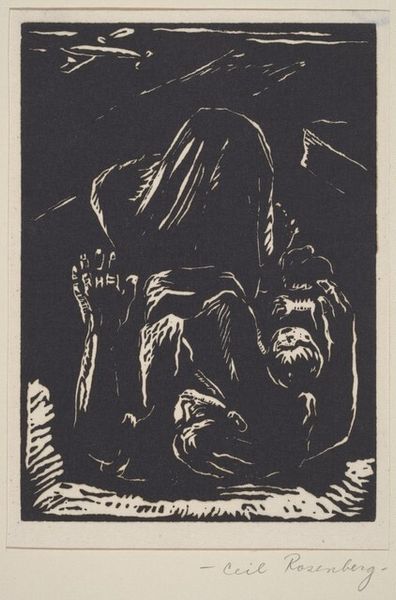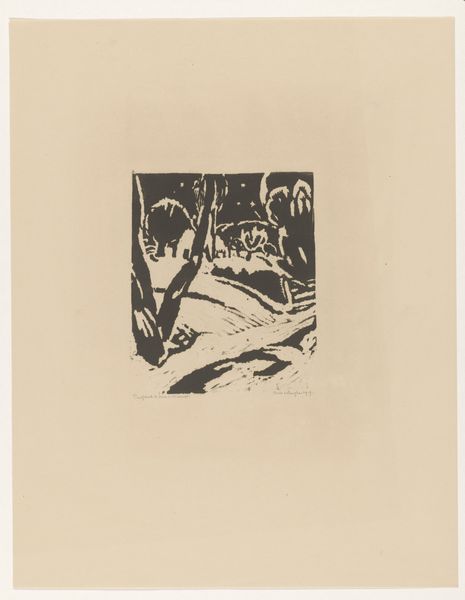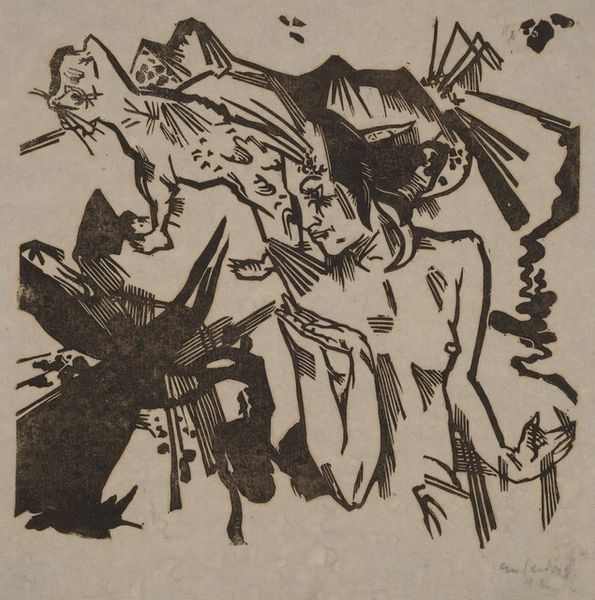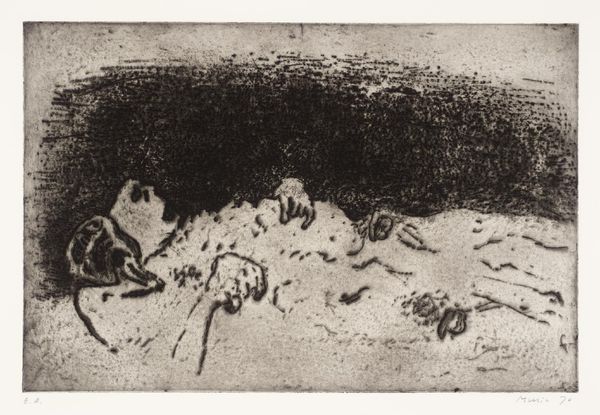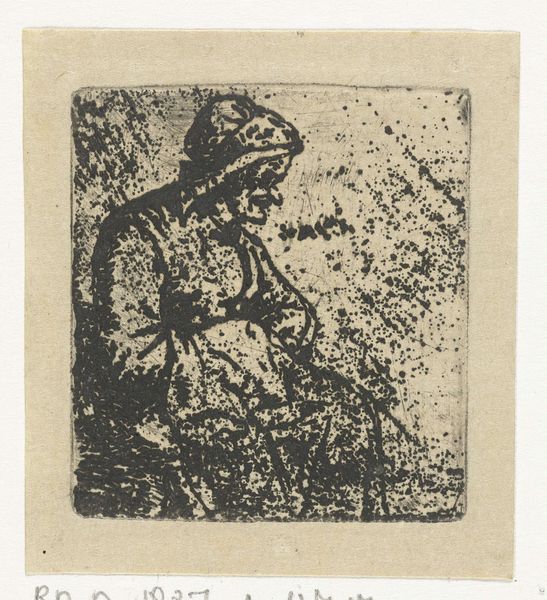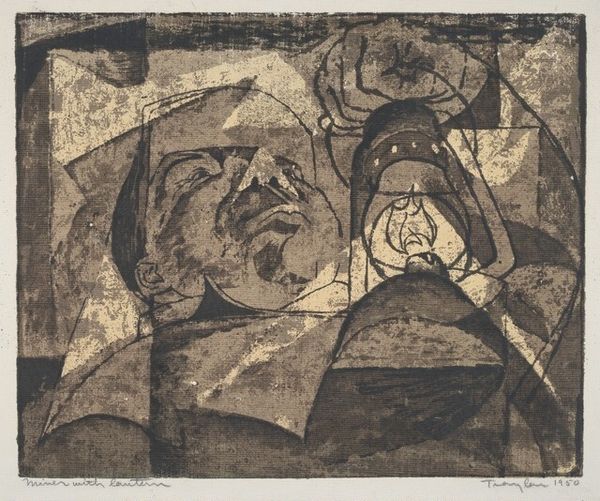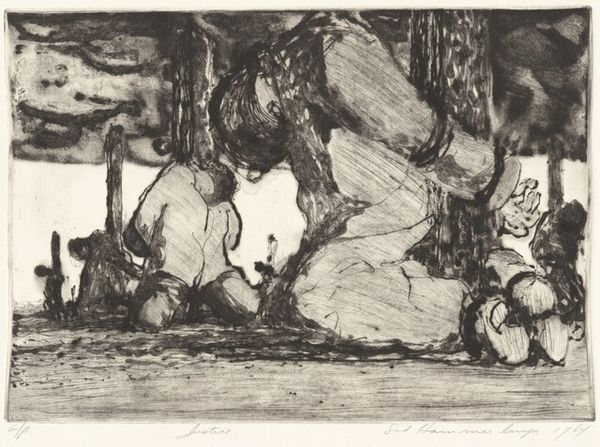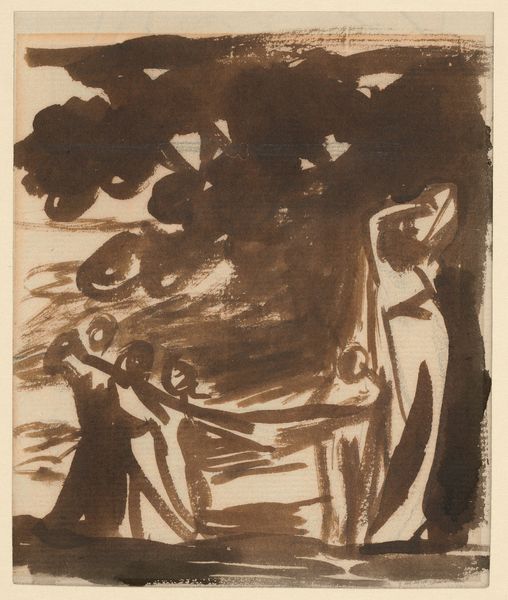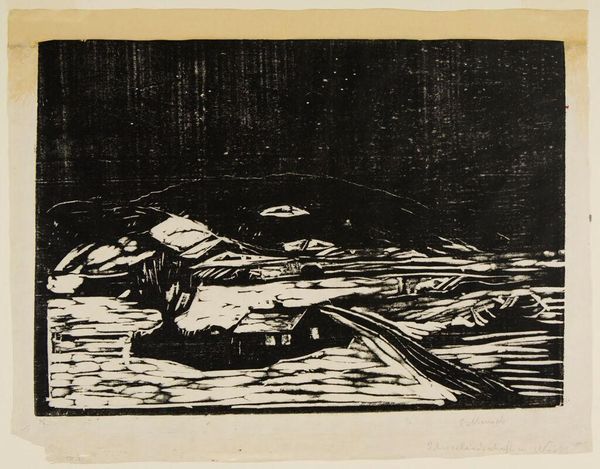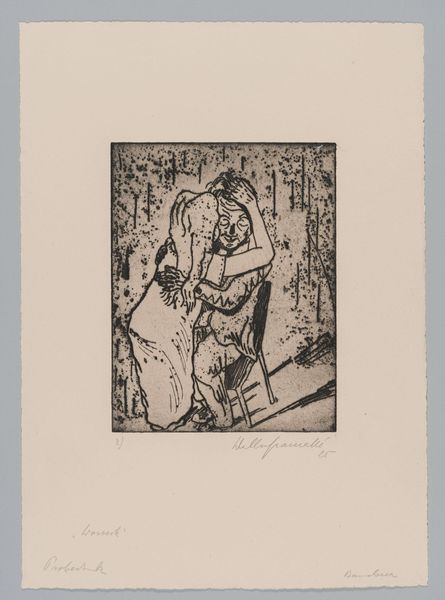
print, woodcut
#
narrative-art
# print
#
etching
#
german-expressionism
#
figuration
#
woodcut
Dimensions: image: 16.51 × 19.84 cm (6 1/2 × 7 13/16 in.) sheet: 23.18 × 29.53 cm (9 1/8 × 11 5/8 in.)
Copyright: National Gallery of Art: CC0 1.0
Emil Nolde made this woodcut, Mausefallenmann, sometime around 1906. You can see how the stark contrast of black ink on paper creates a world of intense emotion and drama. The physicality of the medium is really present. The lines are bold, and the textures are rough, hinting at the force with which Nolde carved into the woodblock. Look at the figure on the left, hunched over with a walking stick, his face a mask of grotesque features. The way Nolde renders his form, with these heavy, angular lines, it conveys a sense of burden, of struggle. This relates to the angular lines that form the whole picture. This piece is interesting in relation to other German Expressionists, Kirchner, Heckel, Schmidt-Rottluff. What sets Nolde apart is his deeply personal and spiritual approach. His works aren’t just about social critique or formal experimentation; they’re about tapping into something primal and elemental. Art is an ongoing conversation and exchange of ideas across time.
Comments
No comments
Be the first to comment and join the conversation on the ultimate creative platform.
